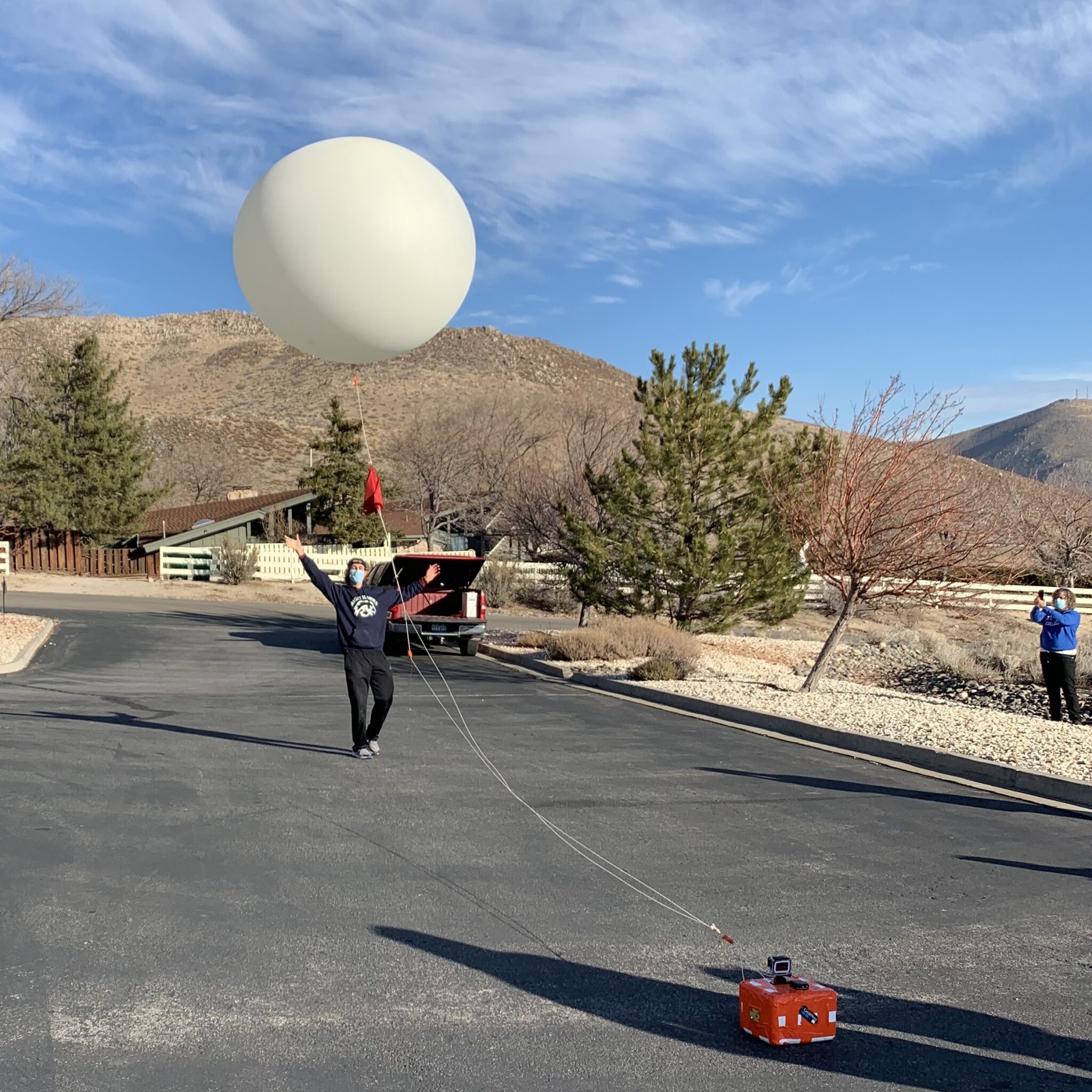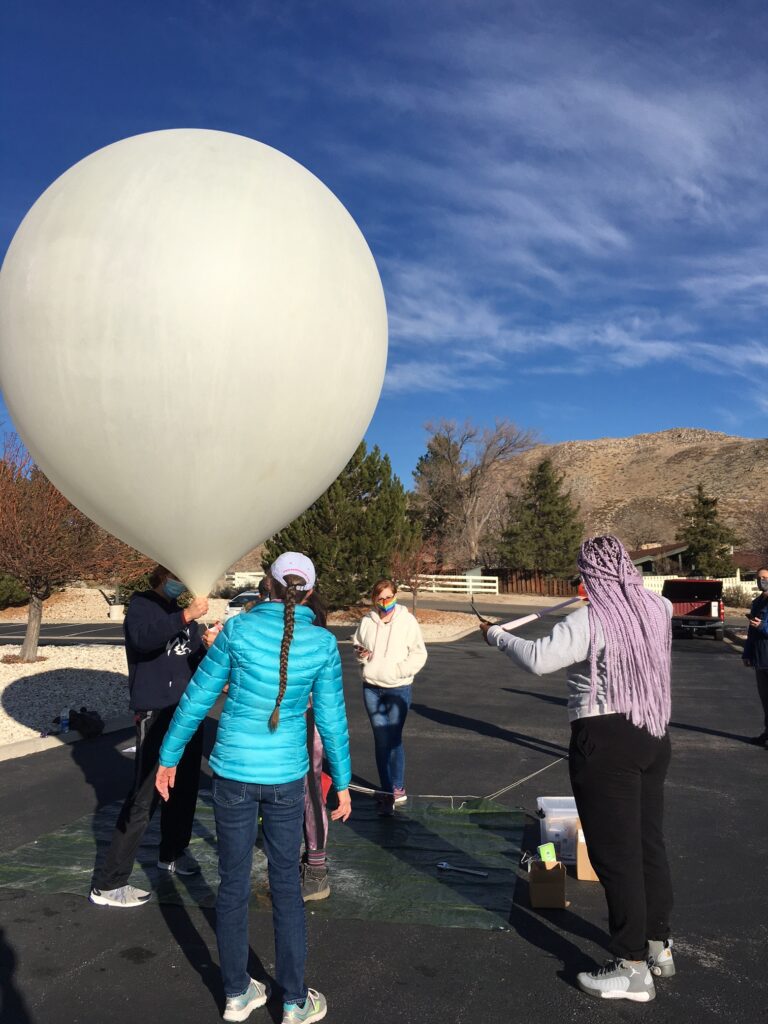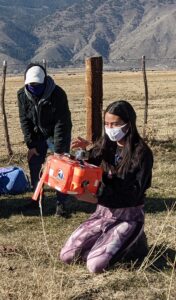High Altitude Balloon Research Engages Students
High Altitude Balloon Research Engages Students
Dec 8, 2020

High Altitude Balloon Research Engages Students

Western Nevada College students prepare a high altitude balloon for its launch on Dec. 4 at Jack C. Davis Observatory.
While most students across the country have been learning online this fall because of COVID, a group of students at Western Nevada College took advantage of an exciting hands-on scientific learning opportunity on Dec. 4.

The payload that provided all of the data in the high altitude balloon research project was recovered in a cow pasture in Minden.
Students and science professors gathered at Jack C. Davis Observatorys parking lot early in the morning and sent a helium-filled balloon nearly 17 miles into the stratosphere to record high-altitude data, then retrieved the balloons payload, which included instruments and sensors, in a cow pasture a few towns away in Minden.
Participating students were Mandy McLaughlin, Alondra Rodriguez-Patino, SyJohnniqaMoore, Tyler Logan, Eduardo Lopez and Ciana Rollings.
The Community of Practice high altitude balloon project was made possible through a grant that WNC Biology and Chemistry Professor Dr. Elizabeth Tattersall received through the NASA Nevada Space Consortium.
The reason this is called a Community of Practice is having students work together, not alone, building companionship in science and bouncing ideas off of each other, Tattersall previously said.
Physics Professor Dr. Thomas Herring and Geosciences Professor Dr. Winnie Kortemeier also participated in the research project, which began in August 2018. The instrumentation and sensors in the payload allowed the students to record temperature, pressure, radioactivity and altitude.
The balloon reached 88,872 feet before bursting and sending the payload to a rapid descent to farmland in Minden.
We were able to visually track the balloon all the way up due to our clear Nevada skies and the sharp eyes of Dr. Tattersall, Dr. Herring said.
Students who participate in the research project receive up to a $1,000 scholarship per semester.